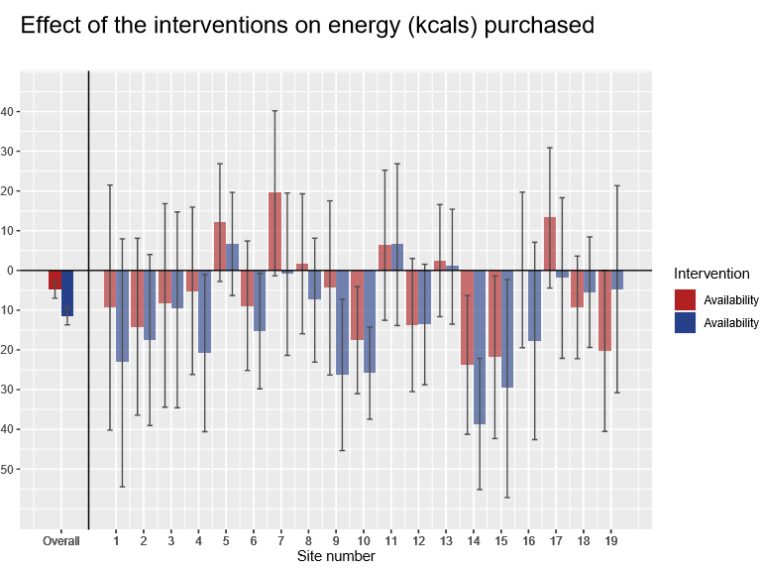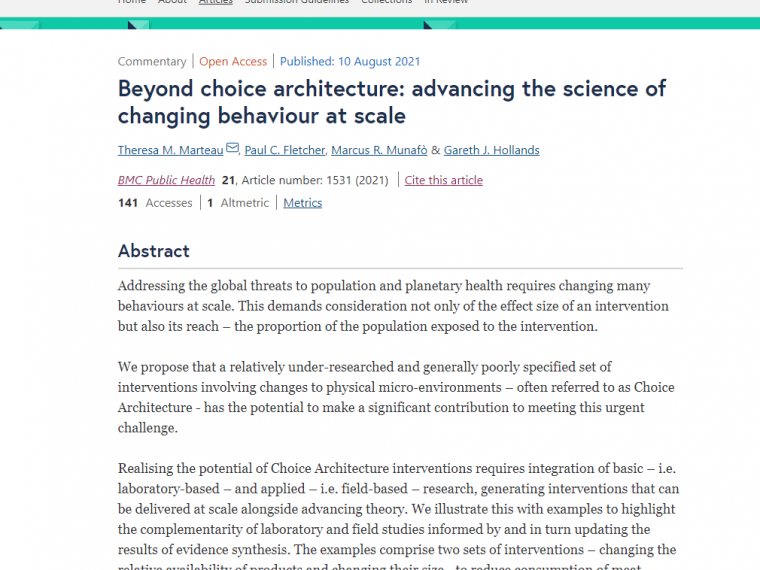
Do different sizes and shapes of tableware impact self-serving of food and alcohol?
Posted: 21/10/2021
Excessive consumption of alcohol and high calorie foods are two significant preventable causes of many diseases. Changing the size of tableware or packaging is one possible method for reducing consumption.
In a laboratory setting, we randomised 140 adults to the order they completed two studies. In each study participants were asked to complete six conditions in random order, during which they were instructed to self-serve their typical amount of food or wine.
READ MORE

Impact of decreasing the proportion of higher energy foods and reducing portion sizes on food purchased in worksite cafeterias: A stepped-wedge randomised controlled trial
Posted: 15/09/2021
Unhealthy food environments contribute to high and increasing rates of obesity. There is growing evidence that interventions that target the food environment may be effective at reducing energy intake. The current study aimed to investigate whether two such interventions could result in people buying food and drinks that are lower in calories.
READ MORE

How visible are e-cigarette and smoking paraphernalia retail displays in England? And is visibility higher in more deprived areas?
Posted: 14/09/2021
Tobacco (smoking) retail displays are banned in many countries, including in England. Following a ban, tobacco products are often stored within covered units, although typically the units are visible and positioned below tobacco signage. These bans are put in place because tobacco retail displays are linked to increased smoking among adults, and greater susceptibility to smoking among young people, leading to poorer health.
There is no equivalent ban on displays of electronic cigarettes (e-cigarettes) or smoking paraphernalia (products such as cigarette lighters) in England, which are often positioned alongside covered tobacco storage units.
READ MORE

Beyond choice architecture: advancing the science of changing behaviour at scale
Posted: 17/08/2021
Our new publication is out which addresses the global threats to population and planetary health requires changing many behaviours at scale. This demands consideration not only of the effect size of an intervention but also its reach – the proportion of the population exposed to the intervention.
We propose that a relatively under-researched and generally poorly specified set of interventions involving changes to physical micro-environments – often referred to as Choice Architecture – has the potential to make a significant contribution to meeting this urgent challenge.
READ MORE









